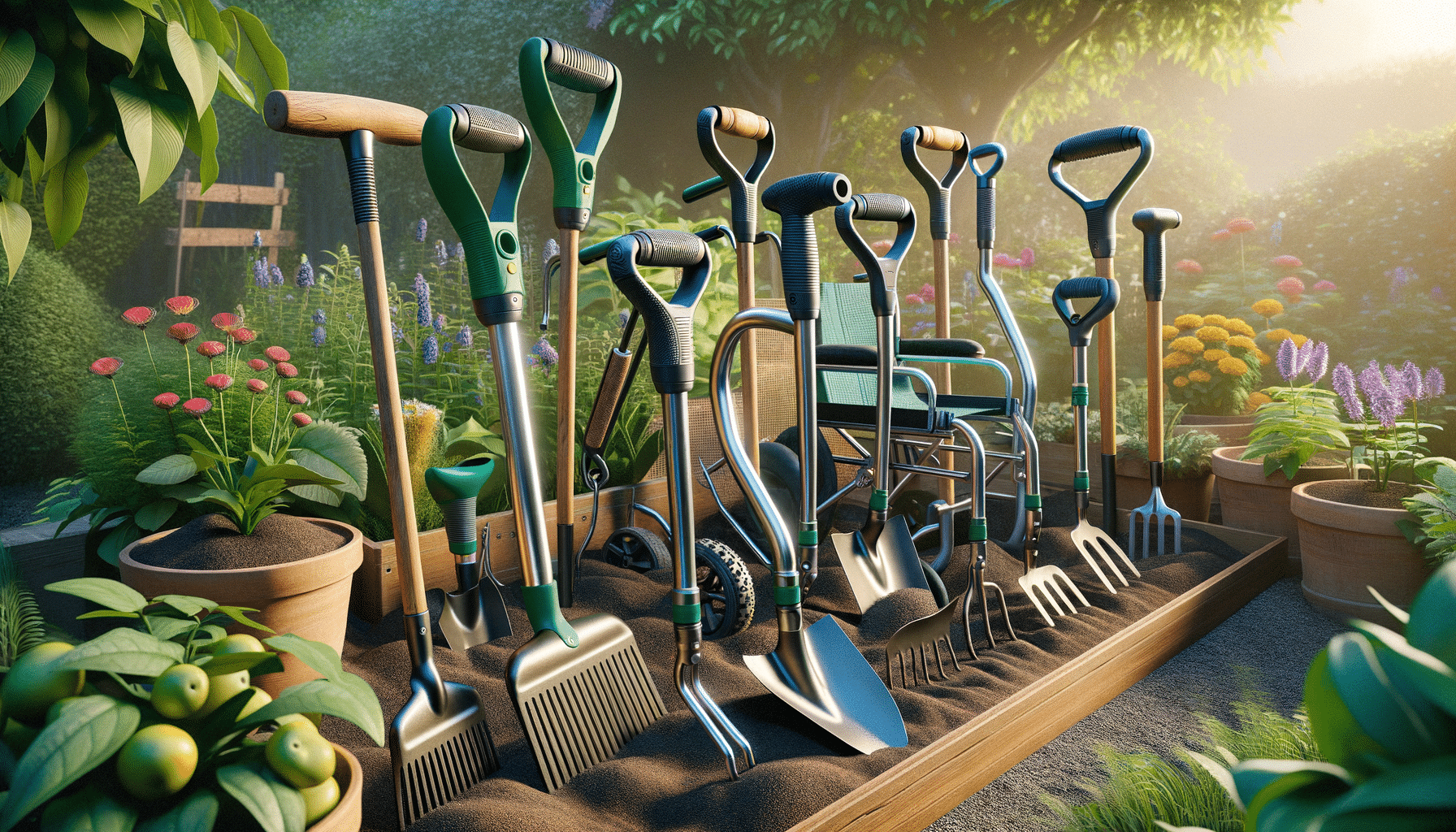
Adaptive Gardening for Seniors and People with Disabilities. Discover Tools That Actually Make a Difference.
Gardening for Seniors: A Path to Wellness
Gardening is not just a hobby; it’s a therapeutic activity that can significantly enhance the quality of life for seniors. Engaging in gardening provides a sense of purpose and accomplishment, which can be particularly beneficial for older adults who may feel isolated or disconnected. The act of planting, nurturing, and watching plants grow can offer immense satisfaction and a sense of achievement.
Research has shown that gardening can improve mental health by reducing stress, anxiety, and depression. The physical activity involved in gardening, such as digging, planting, and weeding, can help maintain physical fitness and flexibility. For seniors, regular gardening can improve cardiovascular health, increase strength, and enhance mobility. Moreover, being outdoors and soaking in natural sunlight helps in the production of vitamin D, which is crucial for bone health.
For seniors who may have mobility issues or arthritis, adapting gardening practices can make this activity more accessible. Raised garden beds, vertical gardens, and container gardening are excellent options that reduce the need for bending and kneeling. Community gardens also offer social interaction, allowing seniors to connect with others who share their passion for plants. These gardens often provide raised beds and accessible pathways, making them suitable for individuals with limited mobility.
In addition to physical and mental benefits, gardening can also encourage healthier eating habits. Seniors who grow their own vegetables and herbs are more likely to consume fresh, nutritious produce. This not only supports overall health but also provides a sense of pride in growing one’s own food. Whether through traditional methods or adapted practices, gardening can be a fulfilling and enriching activity for seniors, contributing positively to their overall well-being.
Long Handled Garden Tools for the Elderly
As we age, certain physical tasks can become challenging, and gardening is no exception. Long handled garden tools are specifically designed to address these challenges, offering a practical solution for seniors who wish to continue gardening without the strain. These tools are crafted to reduce the need for bending or kneeling, making gardening more comfortable and accessible.
Long handled tools come in various forms, including trowels, weeders, hoes, and cultivators. The extended handles allow seniors to reach plants and soil without excessive bending, which can alleviate pressure on the back and knees. This ergonomic design is particularly beneficial for those with arthritis or joint pain, as it minimizes the need for repetitive motions that can exacerbate discomfort.
When selecting long handled tools, it’s essential to consider the material and weight. Lightweight materials such as aluminum or fiberglass are ideal, as they are easy to maneuver and reduce fatigue. Some tools also feature adjustable handles, allowing users to customize the length to their preference and comfort level.
In addition to traditional tools, there are innovative options such as ergonomic pruners and rakes with rotating handles. These designs further enhance comfort by allowing for a more natural grip and reducing wrist strain. For seniors who enjoy container gardening, long handled watering wands are a convenient option, enabling easy watering of pots and hanging baskets without the need for lifting heavy watering cans.
Overall, long handled garden tools can make a significant difference in the gardening experience for seniors. By reducing physical strain and enhancing comfort, these tools empower older adults to continue enjoying their gardening pursuits, fostering a sense of independence and well-being.
Adaptive Gardening Tools for the Disabled
Gardening is a rewarding activity that should be accessible to everyone, regardless of physical ability. Adaptive gardening tools are designed to accommodate the unique needs of individuals with disabilities, enabling them to participate in gardening with ease and enjoyment. These tools are tailored to provide comfort, functionality, and accessibility, ensuring that gardening remains an inclusive hobby.
One of the key features of adaptive gardening tools is their ergonomic design, which minimizes strain on the body. Tools with soft, non-slip grips and contoured handles are easier to hold, reducing the effort required to perform gardening tasks. Additionally, tools with adjustable lengths and angles allow users to customize their gardening experience, accommodating various physical needs and preferences.
For individuals with limited hand strength or dexterity, tools with ratcheting mechanisms or spring-loaded handles can be particularly beneficial. These designs require less force to operate, making tasks like pruning or cutting more manageable. Furthermore, lightweight materials and balanced designs help reduce fatigue, allowing users to garden for longer periods without discomfort.
Raised garden beds and vertical gardens are excellent solutions for those who may have difficulty bending or kneeling. These options bring the garden to a more accessible height, allowing individuals to tend to plants without straining their backs or knees. Additionally, container gardening offers flexibility, as pots can be placed on tables or stands to suit the gardener’s needs.
Adaptive gardening tools and techniques not only enhance accessibility but also promote independence and confidence. By enabling individuals with disabilities to engage in gardening, these tools contribute to improved physical health, mental well-being, and a sense of accomplishment. Embracing adaptive gardening can open up new opportunities for creativity and connection with nature, enriching the lives of those who partake in this fulfilling activity.


